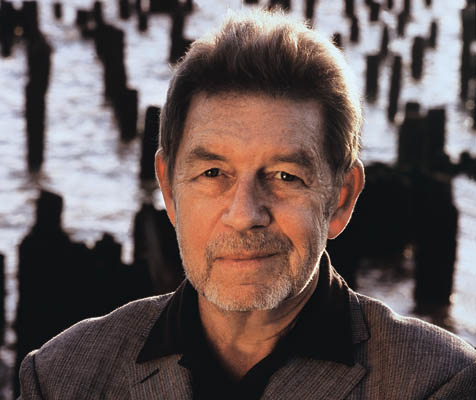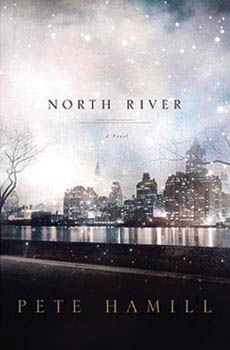Pete Hamill’s New Novel, North River
A Love Story for Grownups

Among mature people, love develops in a series of small moments,” explained Pete Hamill, on the phone from New York City to discuss his new novel, North River. “It’s about needs, desires, and understandings. It’s not like Wuthering Heights; that’s not the way people connect with each other. I wanted to do a love story for grownups.”
North River‘s protagonist Jim Delaney, a battle-wounded Irish physician in Depression-era New York, could hardly be further removed from Jane Austen’s coterie. Barely able to support himself, he nevertheless makes constant house calls to patients unable to pay their own bills. Delaney’s wife, frustrated with the void created by his voluntary service in the Great War, wanders off one day in the direction of the North River (as the Hudson was then known), never to be seen again. When the good doctor discovers his own grandchild abandoned at his door, it seems his subsistence-level lifestyle is doomed.

Delaney’s grown daughter, the note pinned to little Carlito’s stroller explains, intends to travel to Spain in order to locate her devoutly revolutionary husband. In the meantime, she’d like Delaney to raise her two year old as best as he can. Because Delaney’s fumbling best looks adequate to nobody, he hires Rose Verga, an Italian immigrant with a hazy past, to be Carlito’s nanny, paying her with a windfall of dubious provenance the doctor received after secretly treating a gangster’s gunshot injury. Complicating the situation, a threatening rival gangster learns of Delaney’s involvement in the conflict, and Rose’s history with that rival gang slowly emerges.
“It’s blue collar New York during the Depression,” Hamill said. “It’s 1934, the beginning of the LaGuardia administration in a Tammany neighborhood where everyone reads papers. Hitler’s rising, and they begin to see ominous possibilities of war. Delaney was in World War I, as were others, but by 1934 it was as forgotten as Vietnam now.” A longtime journalist and onetime editor of both the New York Daily News and the New York Post, Hamill has infused the tale with the events of the day and a newspaperman’s ear for dialogue. “If you’ve covered a murder, say, you learn to look for the detail that reveals character and scope and doesn’t feel recycled; not a rehash, but a unique moment,” he said. “To me, good fiction always does that.”
Many of North River‘s details reveal the vibrant, varied ethnicity of Delaney’s New York, a place and time driven by the energy of immigrants. “There are many ways to be a New Yorker,” Hamill commented, “as there are many ways to be an American. The Irish weren’t prisoners of Irish roots; they could do anything and make choices they couldn’t have in Ireland. People came and were liberated, while at the same time holding on to nostalgia for the place where, as bad as it was, they were once nine. You hear that pervasive nostalgia today in Mexican neighborhoods, in the music of the old country evoking what’s been left behind. But the city was never warring ghettos. People got along and ended up marrying each other.”
In writing North River, Hamill wanted to show the strength of these Americans as they endured the trying conditions of the 1930s together. “Millions were shaped by that generation, and I wanted to celebrate them,” he said. “They didn’t talk tough; they were tough, putting up with the things you can’t do anything about and coming through with a healthy fatalism.” A diverse society, Hamill observed, “is like an alloy: stronger than the individual metals that compose it.” The drama that plays out in North River shows how such an alloy holds out even under the greatest pressures.
4•1•1
Pete Hamill will discuss immigration and the lessons of New York on Wednesday, October 17, at UCSB’s Campbell Hall at 8 p.m. The lecture is free to the public. Call 893-3535 or visit artsandlectures.ucsb.edu.



